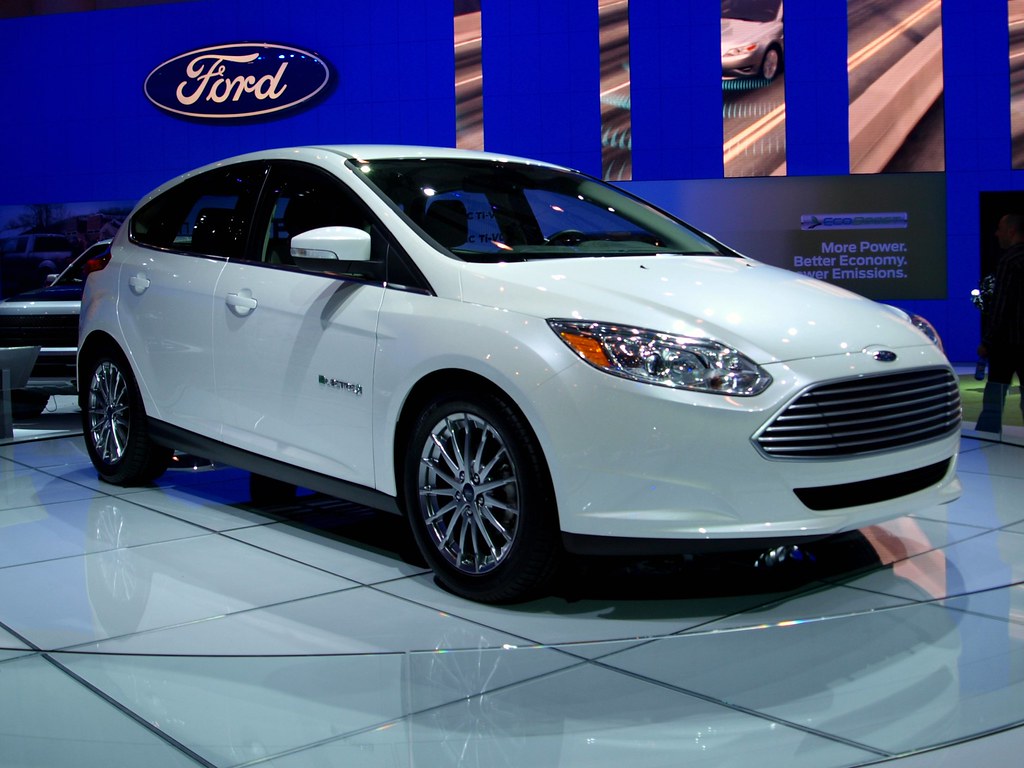
The allure of the SUV market, especially here in North America, is absolutely undeniable. After navigating years of turbulent high prices and frustratingly low inventory, a distinct shift is underway. Kelley Blue Book reports that compact and subcompact SUVs are now outselling their larger, often more expensive, truck and midsize counterparts. It seems everyone is chasing that elusive dream: a perfect blend of versatility, comfort, fuel efficiency, and dependability. On paper, it sounds like the ideal solution for modern life, a vehicle capable of handling everything from daily commutes to weekend adventures.
But let’s get real for a moment. That glossy brochure, those enthusiastic sales pitches, they’re often hiding a much harsher reality. The uncomfortable truth is that not every SUV delivers on its promises. In fact, many fall woefully short, leaving buyers with a lingering sense of regret that no amount of fancy advertising can erase. They might initially tempt you with a shiny exterior or a seemingly attractive price tag, but underneath that veneer, you’ll frequently find a concoction of weak engines, questionable reliability, and ownership experiences so frustrating they’ll make you wish you’d just kept walking when you first saw it on the lot.
We’re not here for polite nods or generic, balanced reviews. This is about cutting through the noise with a blunt, direct assessment. We’re talking about the vehicles that inspire genuine buyer’s remorse, the kind that settles in like a bad taste and makes you second-guess every decision you’ve ever made. Our mission is to shine a harsh light on 10 small SUVs that consistently disappoint, costing owners more than just money – they cost peace of mind. Let’s dive headfirst into the first five contenders for your deepest automotive regrets, starting with a familiar name that often misses the mark.
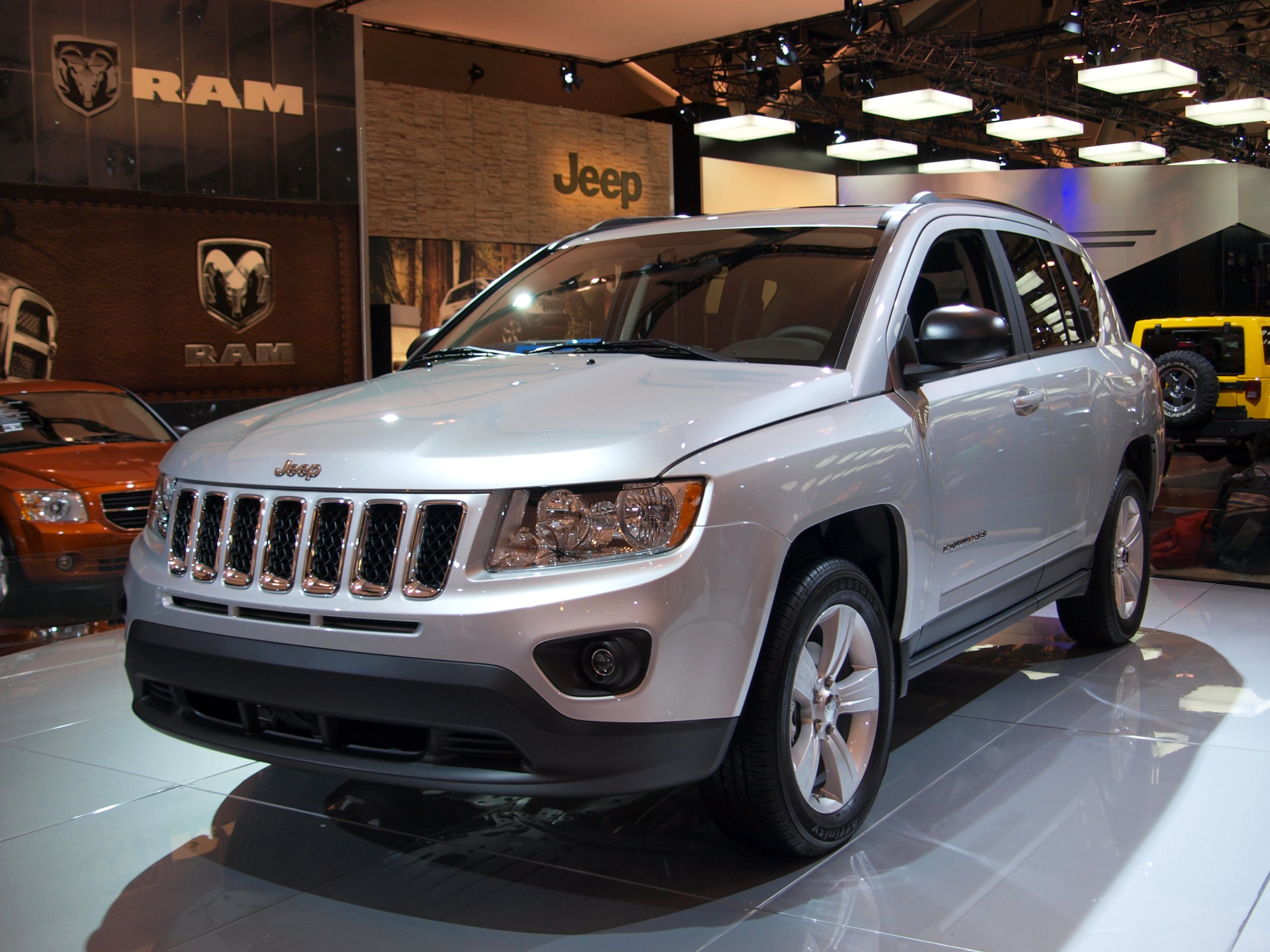
1. **Jeep Compass**Let’s kick things off with the Jeep Compass, a vehicle that, despite its iconic badge, struggles profoundly to meet “Jeep expectations.” It’s a prime example of a brand trading on heritage without fully delivering on the rugged capability and reliability that nameplate usually implies. When Consumer Reports, a trusted voice in automotive evaluations, published its 2024 reliability rankings, the Compass landed in an unenviable position: second to last among all vehicles, with only Chrysler’s Pacifica Hybrid minivan performing worse. That’s not just a bad score; it’s a glaring red flag, suggesting this SUV is far from the dependable machine its lineage might lead you to believe.
The fundamental issue often lies squarely with its powertrain, specifically the base 2.4-liter four-cylinder engine. This isn’t a powerplant that inspires confidence; rather, it delivers “sluggish acceleration” that makes merging onto busy highways a white-knuckle experience instead of a confident maneuver. It consistently feels underpowered, struggling to get out of its own way, let alone keep pace with modern traffic. Compounding this anemic performance, its fuel economy is an “underwhelming 25 mpg combined.” You’re essentially paying for underwhelming power and then paying again at the pump for the privilege of driving it.
Step inside, and the situation doesn’t improve much. The “interior quality lags far behind competitors,” characterized by “cheap plastics and dated technology” that feel a generation behind. It lacks the tactile satisfaction and modern polish that buyers expect even from an entry-level SUV. This isn’t just about aesthetics; it reflects a broader lack of refinement that permeates the entire driving experience. The cabin can feel uninspired and utilitarian, missing any of the thoughtful touches that make a daily commute more pleasant, forcing you to simply tolerate your surroundings rather than enjoy them.
Beyond the aesthetics and performance, reliability emerges as a critical, recurring concern. Both Consumer Reports and J.D. Power consistently report “below average” ratings for the Compass, highlighting persistent issues that can plague owners. One particular thorn in its side is “recurring electrical faults,” the kind of intermittent, difficult-to-diagnose problems that can quickly turn ownership into a costly headache, sending you back to the dealership far too often. For buyers in regions like Canada, where winter durability isn’t just a preference but a necessity, the Compass often feels more like a “dressed-up hatchback than a rugged SUV.” It fails to inspire the crucial confidence needed when facing challenging weather, making its revered Jeep badge feel more like a cruel joke than a promise of capability.
Read more about: Buyer’s Remorse in Every Mile: 11 Cars Drivers Say They’d “Unbuy” If They Could

2. **Mitsubishi Outlander Sport (RVR in Canada)**Next up is the Mitsubishi Outlander Sport, known as the RVR in Canada, a vehicle that appears to be stuck in a design and engineering time warp. It has “barely changed in over a decade,” which, in today’s rapidly evolving automotive landscape, is a recipe for irrelevance and disappointment. This isn’t a testament to timeless design; it’s a stark reminder of stagnation, where competitors have long since moved on, leaving the Outlander Sport in the dust.
Its 2.0-liter engine produces a mere 148 horsepower, proving utterly insufficient for modern driving demands. It “struggl[es] on highways,” requiring excessive effort to reach and maintain cruising speeds, and becomes even more taxed when “loaded with passengers or cargo.” Don’t even think about confident overtakes. The fuel economy is, at best, “mediocre,” failing to offer compensation for its anemic performance. And to top it off, the accompanying CVT transmission is notorious for being “noisy under acceleration,” creating an unpleasant, droning soundtrack that will quickly wear on your nerves and remind you of every horsepower it isn’t delivering.
Beyond its weak powertrain and the irritating noise, the Outlander Sport’s overall package falls notably short. Safety ratings from the IIHS have been “mixed,” which is a concerning assessment for any modern vehicle, especially one meant for families. You want peace of mind, not a question mark hovering over crash performance. The interior is filled with “outdated switchgear and hard plastics,” contributing to a distinctly cheap and uninspired feel that belies its category. It’s a cabin that merely exists, offering little in the way of comfort or contemporary design.
While Mitsubishi attempts to lure buyers with “long warranties,” the context clearly states, “most Canadians realize the vehicle itself is outclassed in every way.” A lengthy warranty, while a nice safety net, cannot mask the fundamental flaws of an outdated and underperforming vehicle. It’s like putting a fancy bow on an old, empty box; the packaging might be appealing, but what’s inside is undeniably disappointing. This SUV serves as a cautionary tale: sometimes, you truly do get what you don’t pay much for.
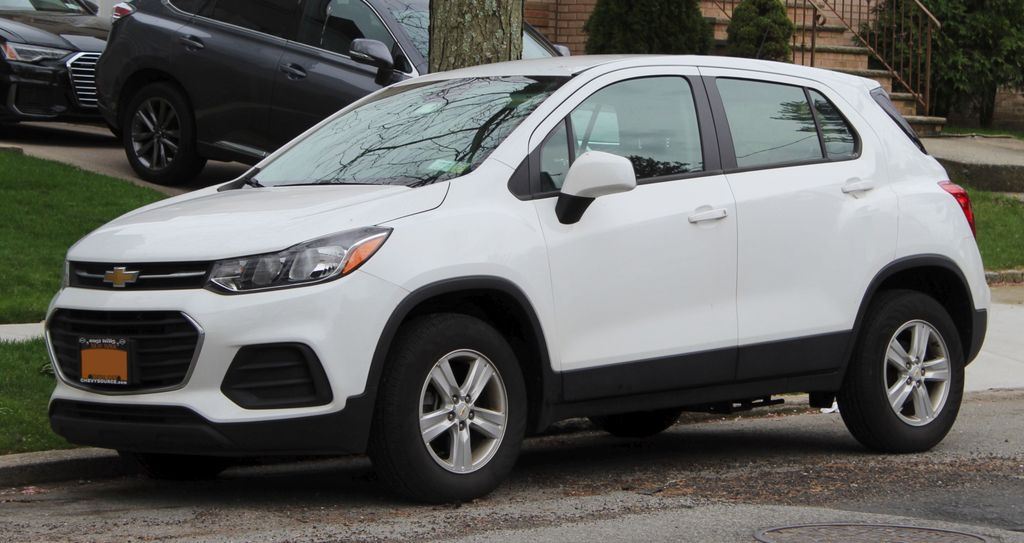
3. **Chevrolet Trax**The Chevrolet Trax is often positioned as an “affordable entry point to SUVs,” a seemingly attractive proposition for budget-conscious buyers. However, its initial low price belies its long-term shortcomings, making it a classic case where “affordability only goes so far.” This is a vehicle that quickly teaches you the true meaning of false economy, leading to frustrations that quickly outweigh any upfront savings you might have enjoyed. Buyers often regret not looking deeper past the appealing sticker price.
Power comes from a 1.4-liter turbo four-cylinder, which, despite the ‘turbo’ in its name, generates a modest 155 horsepower. This engine “feels underwhelming in real-world driving,” particularly on highways where it constantly struggles to maintain momentum, making passing maneuvers a strategic calculation rather than a simple acceleration. While “fuel economy is fine” – and that’s about the kindest word you can use – reliability has unfortunately emerged as a significant “sore spot” for owners. Common complaints center on “turbo failures and electrical issues,” which are not minor glitches but costly, inconvenient problems that quickly erode the perceived value and reliability.
Interior space is another critical drawback that will test your patience. The cabin feels notably “cramped,” and rear seating is particularly “tight compared to rivals,” limiting practicality for families or anyone regularly carrying adult passengers or even growing children. Long journeys become a test of endurance rather than a comfortable commute. This restricted interior space means you’re constantly compromising on what you can carry or who you can comfortably transport, a frustrating reality for an SUV.
Furthermore, adding insult to injury, the Trax suffers from “resale values dropping fast,” making it widely “considered a poor investment” in the long run. The initial affordability quickly evaporates when you try to sell it. When competitors like the Honda HR-V or Mazda CX-30 consistently “offer more for the money” – whether it’s more space, greater refinement, or proven reliability – the Trax’s appeal diminishes rapidly, cementing its place on the regret list. It’s a vehicle that seems to exist solely to prove that sometimes, a cheap price tag is a warning, not an opportunity.
Read more about: The Ultimate Guide to Family-Friendly Cars: Top Picks & Essential Considerations for Kids and Pets in 2025
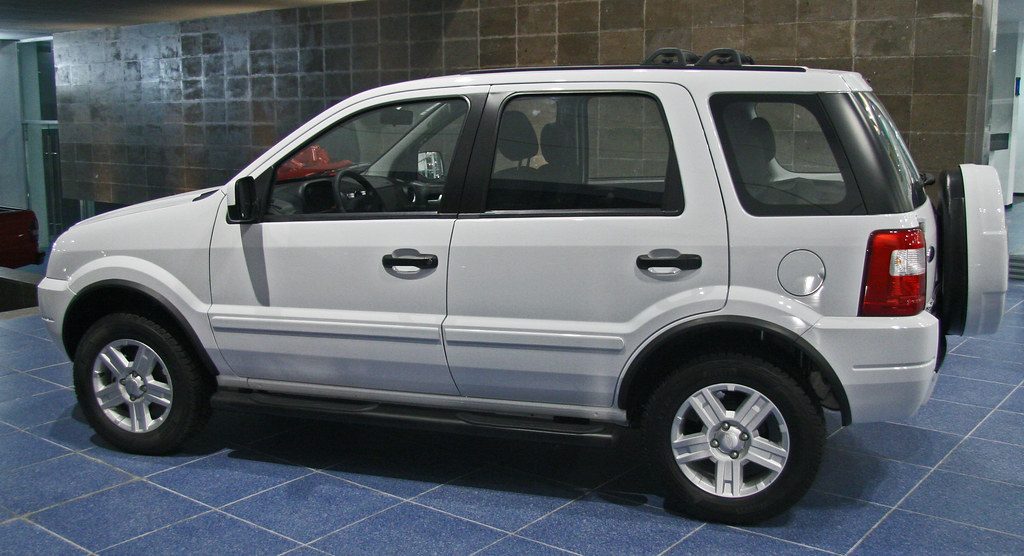
4. **Ford EcoSport**Ford’s EcoSport quickly became known as a significant “misstep” in the North American market, struggling “from the moment it hit North American showrooms.” It represents a perplexing product decision that left many buyers and critics scratching their heads, wondering how such a package made it past the drawing board for our market. This SUV never truly found its footing, and for very good reasons, cementing its status as a vehicle many wish they had avoided.
Its Achilles’ heel is undoubtedly its profoundly weak powertrain. The base 1.0-liter turbo three-cylinder produces a paltry 123 horsepower, making it “one of the weakest vehicles in its class.” This isn’t just a number; it translates directly into a driving experience that feels sluggish and underpowered for almost any task. Even the optional 2.0-liter four-cylinder barely manages to improve performance, struggling “to keep up” with daily traffic and leaving drivers constantly wanting for more. Highway driving is particularly unpleasant, characterized by a “loud cabin and poor ride comfort,” leading to a fatiguing experience for occupants even on relatively short trips.
Design choices further hamper its practicality and usability, most notably the “unusual rear-swinging tailgate.” While this might be a functional feature in other global markets, it’s glaringly “impractical in tight Canadian parking spaces” and often inconvenient in any North American urban setting. This design oversight alone can be a daily annoyance, turning simple tasks like grocery loading into a logistical challenge. Despite its small engine, “fuel economy [is] below many competitors,” negating one of the key benefits of opting for a compact SUV in the first place, forcing you to pay more at the pump for less performance.
As a final, decisive blow to its already questionable reputation, Ford made the call to begin “discontinuing the model.” This decision effectively seals the EcoSport’s narrative as a vehicle that “never found its place” in the competitive North American market. Such a move is a clear indicator of its widespread rejection by consumers and its overall failure to connect. If you happen to spot one on a dealership lot, consider it more of a historical artifact or a relic of a bygone era, rather than a prospective purchase that will bring you joy or long-term satisfaction. You’ve been warned.
Read more about: Rust Resistance Rundown: Identifying the Vehicles That Conquer and Crumble in the American Salt Belt
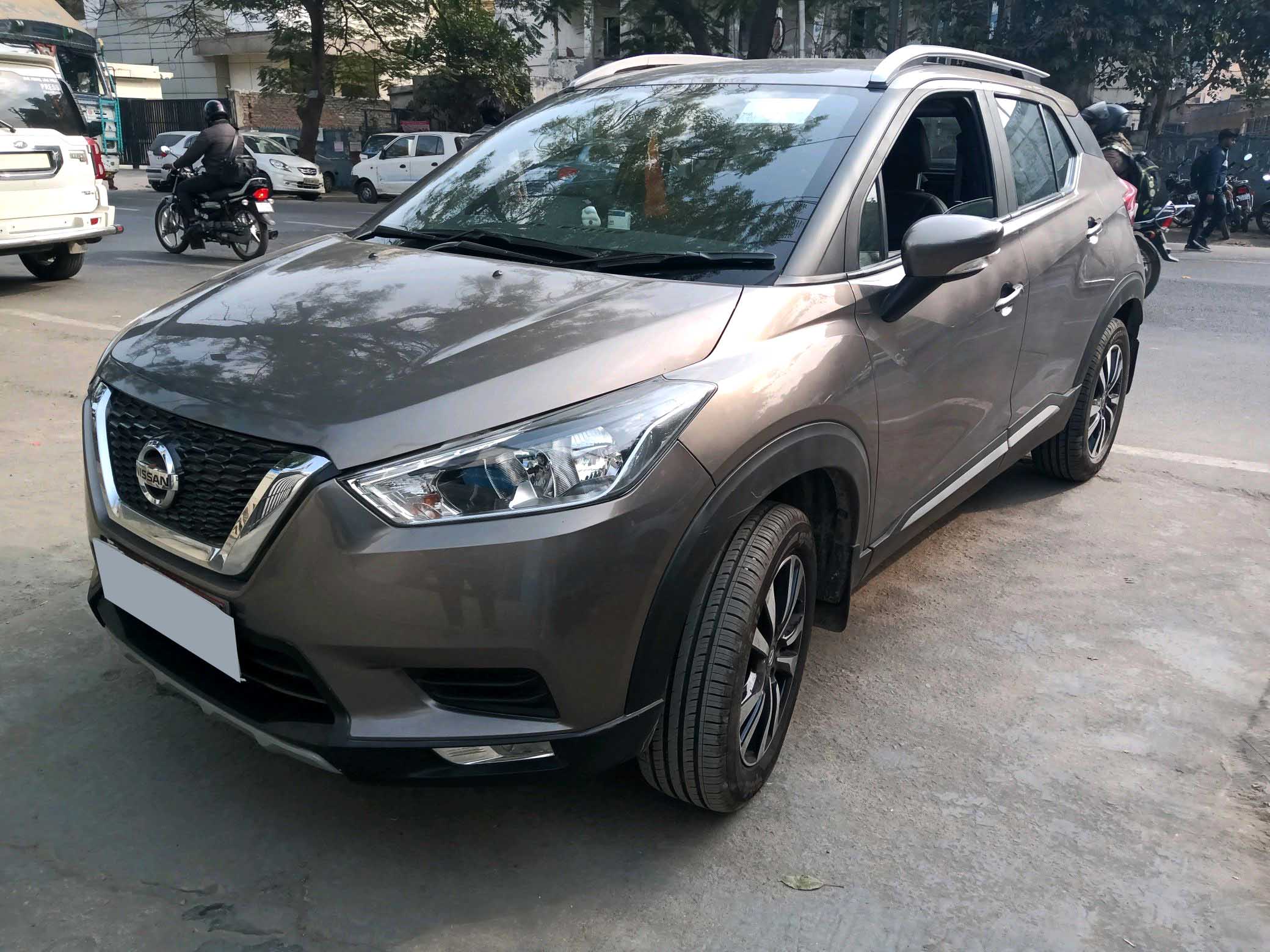
5. **Nissan Kicks**The Nissan Kicks has, against all odds, managed to gain some traction as a “budget-friendly option,” appealing to those who prioritize low upfront costs above almost all else. However, this affordability comes with significant, undeniable compromises, leaving “too much on the table” for discerning buyers who expect a modicum of capability and comfort from their SUV. It’s a vehicle that forces you to constantly weigh its price against its numerous, often frustrating, trade-offs, leading to a quick case of buyer’s regret.
Performance is severely limited by its 1.6-liter engine, which produces a frankly underwhelming 122 horsepower. This translates directly into a vehicle that “struggl[es] to keep up at highway speeds,” making it a constant exercise in patience on longer journeys or when merging into fast-moving traffic. You’ll become intimately familiar with the right-hand lane. A major drawback, particularly for Canadian consumers, is the complete and baffling absence of “all-wheel drive,” a feature nearly every rival includes as standard or an option. For many, especially “Canadian buyers facing snowy winters,” this isn’t just a minor inconvenience; it’s a “dealbreaker,” severely limiting its utility and safety in challenging conditions.
Inside, the story, while expected for its price point, still falls short for many. “Interior materials feel basic,” which is understandable for a budget option, but the true kicker is that “road noise is significant at highway speeds,” detracting considerably from comfort and refinement. Every long drive becomes a battle against ambient din, making conversations difficult and adding to driver fatigue. While its “fuel efficiency is solid at about 33 mpg combined,” this single positive often gets overshadowed by the overwhelming “trade-offs in power and comfort” that define the driving experience. It’s a vehicle that consistently reminds you of its budget status in almost every aspect.
Many buyers find that the savings at the pump simply don’t compensate for the daily frustrations and a glaring lack of capability. The Kicks might seem like a smart financial move at first, but it will cost you dearly in terms of driving enjoyment, versatility, and overall peace of mind. It’s a stark reminder that sometimes, paying a little more upfront for a better-engineered vehicle saves you a lot of headache and regret down the road. This isn’t just a car; it’s a lesson in automotive compromises, and one you might wish you hadn’t learned firsthand.
Read more about: Unplugging the Bottlenecks: Why America’s EV Charging Infrastructure is Stalling the Electric Revolution

6. **Hyundai Kona (Base Models)**The Hyundai Kona often catches the eye with its undeniably sharp looks, and its turbocharged variants can even be a blast to drive, offering a zippy, fun-to-handle experience that belies its small SUV stature. However, like a tantalizing dish with a bland filling, the base models are a different story entirely. Armed with a naturally aspirated 2.0-liter four-cylinder engine, they are, to put it mildly, profoundly underwhelming and quickly dash any hopes of a genuinely engaging drive.
This base 2.0-liter engine, mustering a meager 147 horsepower, means acceleration is not just weak; it’s practically anemic, especially when you need to merge onto a highway or execute a quick passing maneuver. The engine gets unpleasantly loud under stress, emitting a groaning protest as it struggles to keep up, which quickly erodes any sense of refinement or driving pleasure. Owners often report a constant battle between their patience and the vehicle’s profound lack of urgency, turning routine drives into frustrating exercises in compromise.
Adding to the disappointment, reliability concerns have unfortunately surfaced for these base models. Reports of premature engine wear and various electrical glitches are not isolated incidents, painting a concerning picture for long-term ownership. For Canadian buyers, in particular, who often flock to Hyundai expecting excellent value and robust reliability, the base Kona often feels like a budget-cut version of what could otherwise be a genuinely good SUV.
It’s a stark reminder that even a reputable brand can miss the mark when trying to hit a specific price point. This isn’t just about missing a few luxury features; it’s about a fundamental lack of engineering integrity in its most basic form. The base Kona, despite its appealing exterior, simply doesn’t deliver the consistent performance or peace of mind that buyers have come to expect from the brand, leaving you to wonder why you ever gave it a second glance on the lot.
Read more about: Mechanics Reveal 14 Used Cars That Will Drain Your Wallet: A Definitive Guide for Smart Buyers
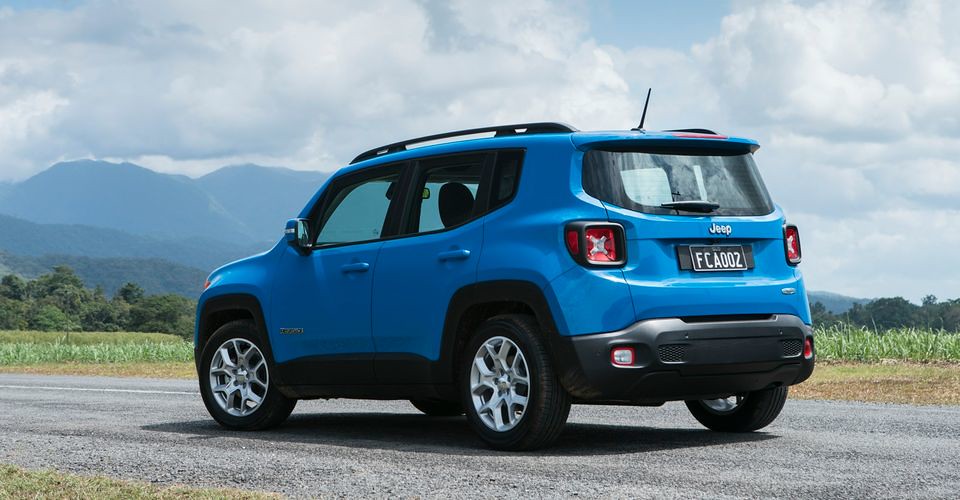
7. **Jeep Renegade**The Jeep Renegade, with its distinctive boxy styling and rugged grille, clearly attempts to capture the iconic Jeep image in a smaller, more urban-friendly package. However, this effort often falls woefully short, delivering more frustration than adventure. It struggles to pull off the rugged authenticity that its larger siblings embody, leaving buyers with a vehicle that feels more like a cosplay of an off-roader than the real deal.
Step inside, and the compromises become immediately apparent. The interior is cramped, particularly for rear passengers, making longer journeys a test of endurance. Cargo space is surprisingly limited for an SUV, challenging its versatility, and the awkward visibility, thanks to thick pillars and a high beltline, can make everyday driving feel more hazardous than it should. It’s an interior that sacrifices genuine utility for styling cues, failing to blend form and function effectively.
The Renegade’s Achilles’ heel, however, is often its nine-speed automatic transmission. This component has been one of the most complained-about features, notorious for jerky shifts, frequent hunting for gears, and a general lack of refinement that can make the driving experience incredibly frustrating. While the optional turbocharged engine attempts to inject some much-needed power, the base models still feel weak and unresponsive, compounding the transmission woes.
Long-term dependability for the Renegade remains questionable, with owners reporting a range of issues that quickly chip away at any initial enthusiasm. Crucially for those in colder climates, the Renegade frequently fails to inspire confidence when faced with harsh Canadian winters, proving that a Jeep badge, while steeped in history and promise, alone doesn’t guarantee toughness or reliable performance when the snow flies. This is a vehicle that often leaves buyers wishing they’d opted for something with more substance than just a venerable nameplate.
Read more about: Beyond the Showroom Shine: 15 Car Brands and Models Driving Experts Would Never Buy – And Why You Shouldn’t Either
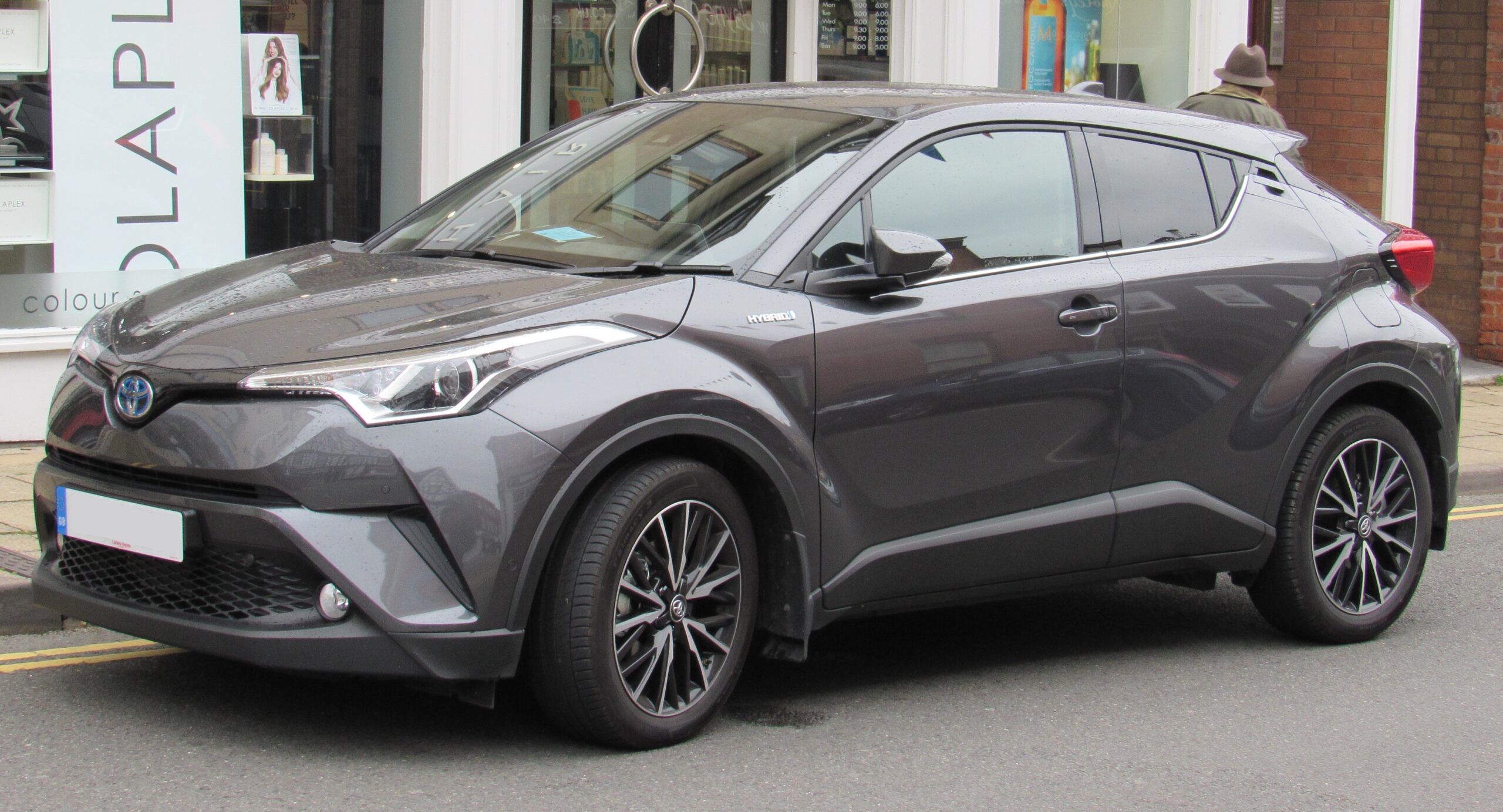
8. **Toyota C-HR**In a market where Toyota is practically synonymous with reliability and sensible engineering, the C-HR stands out as a rare and puzzling misstep. It’s an SUV that seems to have prioritized avant-garde styling over nearly everything else, resulting in a driving experience that’s often sluggish, noisy, and ultimately disappointing for a vehicle bearing the coveted Toyota badge. This isn’t the pragmatic, dependable choice buyers have come to expect.
The power for the C-HR comes from a 2.0-liter engine, which delivers a mere 144 horsepower. This powertrain makes the vehicle feel perpetually sluggish, struggling to accelerate with any enthusiasm, and becoming irritatingly noisy when pressed. Compounding this performance shortfall is a design that, while polarizing and visually distinct, severely compromises practicality. Its dramatic styling cuts deeply into rear visibility, making simple tasks like reversing or lane changes feel surprisingly unsafe and nerve-wracking.
Furthermore, in a glaring omission that baffles many, Toyota does not offer all-wheel drive for the C-HR. This is a significant strike against it in the compact SUV segment, especially for buyers in regions like Canada where AWD is often a crucial feature for winter driving and adverse conditions. In a class where nearly every rival includes this option, its absence is a dealbreaker that severely limits the C-HR’s utility and broad appeal.
Despite Toyota’s formidable reputation for reliability, the C-HR struggles to justify its existence in this fiercely competitive market. Its combination of an underwhelming powertrain, compromised visibility, and the baffling lack of all-wheel drive means it consistently falls short of buyer expectations. It’s an SUV that seems to have forgotten what an SUV is meant to be – a practical, versatile, and confident mode of transport – leaving owners wondering why they ever drove it off the lot.
Read more about: The 2025 Storage Showdown: Which Models Master Practicality, and Which Miss the Mark?
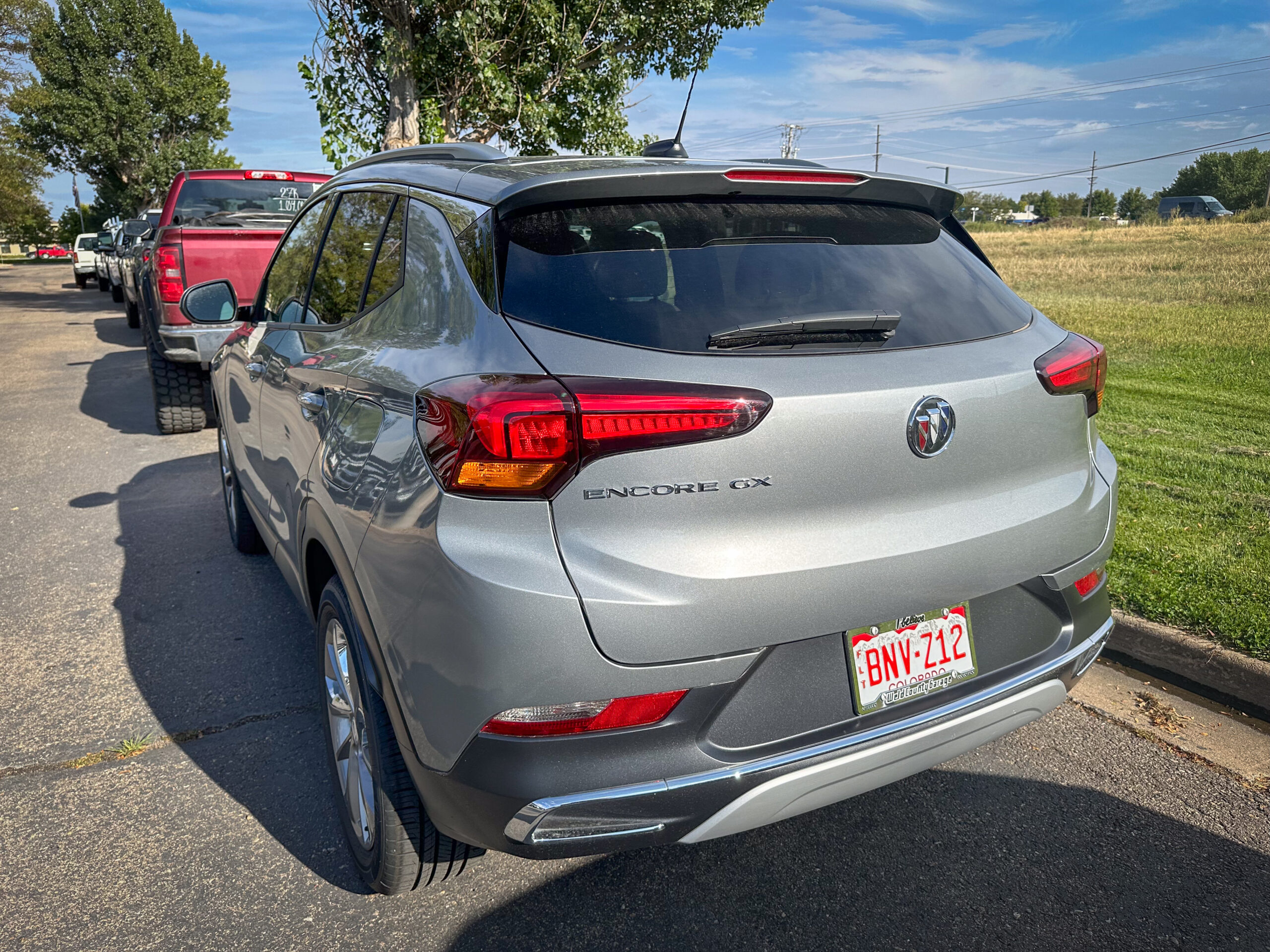
9. **Buick Encore**The Buick Encore attempts to carve out a niche as an “affordable luxury” SUV, but in reality, it often delivers a masterclass in compromise. It’s a vehicle that struggles to live up to either half of that promise, frequently feeling cramped, notably underpowered, and ultimately overpriced for what it truly offers. Buyers drawn in by the premium badge and approachable price point often find themselves quickly disillusioned.
Powering the Encore is a 1.4-liter turbo engine, which, despite its forced induction, only produces a modest 155 horsepower. This means the Encore feels agonizingly slow and strained, especially when compared to rivals in the same price bracket or even cheaper alternatives. It struggles to keep pace, making highway merges and uphill climbs feel like a genuine effort. This performance deficit severely undermines any illusion of a premium driving experience.
Despite carrying a “premium” Buick badge, the interior of the Encore doesn’t offer much of an upgrade over its considerably cheaper GM siblings. The materials can feel underwhelming, and the overall design lacks the refinement and thoughtful touches typically associated with luxury. Reliability, while not disastrous, is merely average, offering little in the way of standout dependability to compensate for its other shortcomings.
Perhaps the most painful aspect for owners, particularly over the long term, is the Encore’s notoriously poor resale value. It quickly depreciates, making it a questionable investment for anyone considering its future worth. When the market offers superior alternatives like a Toyota RAV4 or a Honda CR-V that consistently deliver more for the money – in terms of space, power, reliability, and value retention – most savvy Canadians, and indeed North American buyers, would rather opt for a proven quantity than gamble on Buick’s entry-level offering. It’s a vehicle that serves as a cautionary tale: affordable luxury can sometimes be neither.
Read more about: The Ultimate Guide to Family-Friendly Cars: Top Picks & Essential Considerations for Kids and Pets in 2025

10. **Kia Soul (Classified as a Small SUV)**The Kia Soul is an intriguing vehicle that boldly blurs the lines between a traditional hatchback and a small SUV, defying easy categorization with its distinctive, boxy silhouette. While its unique shape undeniably translates into surprisingly decent cargo space for its footprint, it often falls short of delivering the fundamental attributes that buyers seek in a true SUV. It’s a vehicle that, despite its charms, can leave you wishing for something more robust and genuinely capable.
However, its appeal as an “SUV” starts to fray when you consider the driving experience. Ride comfort, particularly on highways, can be notably harsh, transmitting road imperfections directly into the cabin and making longer journeys less pleasant than they should be. Furthermore, the base engines deliver, at best, mediocre performance, struggling to provide the kind of confident acceleration and passing power expected from even a compact crossover.
While higher trim levels of the Kia Soul do indeed add a respectable array of features and amenities, they also incrementally creep into pricing territory where genuinely capable and established SUVs — like the venerable Toyota RAV4 or the Honda CR-V — firmly dominate. At these price points, the Soul’s identity crisis becomes even more pronounced, as it struggles to compete with vehicles that offer true SUV credentials, including available all-wheel drive, greater ground clearance, and more substantial powertrains.
For buyers genuinely seeking the versatility, robustness, and commanding presence of an SUV, the Kia Soul frequently feels like a dressed-up compact car, offering limited appeal. Its charm is undeniable, and for some urban dwellers, it hits a sweet spot, but for those who expect their “SUV” to handle more than just city streets or light cargo, the Soul inevitably proves to be a source of buyer’s regret. It’s a vehicle that reminds us to look beyond unique styling and consider if it truly meets the functional demands of its segment.
The small SUV segment, despite its undeniable allure and massive popularity across North America, is undeniably a minefield. While these vehicles promise a blend of versatility and affordability, our deep dive has ruthlessly exposed those that routinely fail to deliver. From engines that gasp for breath on the highway to interiors that disappoint, and reliability records that inspire more dread than confidence, these models consistently prove that a low upfront price often comes at a much higher long-term cost in frustration and regret. With fierce competition from truly excellent options, there’s simply no excuse to settle for a vehicle that will leave you constantly questioning your purchase. Choose wisely, or prepare to learn firsthand the sting of buyer’s remorse that settles in long after the test drive ends.



